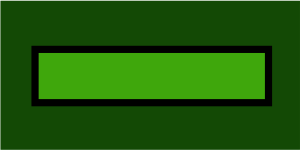10th (Irish) Division facts for kids
Quick facts for kids 10th (Irish) Division10th Division |
|
|---|---|

10th (Irish) Division insignia
|
|
| Active | August 1914 – January 1919 |
| Country | |
| Branch | |
| Type | Infantry |
| Size | Division |
| Part of | K1 Army Group |
| Engagements | World War I |
| Commanders | |
| Notable commanders |
Bryan Mahon |
The 10th (Irish) Division was a special group of soldiers from Ireland. They were among the first new army groups formed in August 1914, right after World War I started. This division was part of "Kitchener's New Army," made up of many volunteers.
It included soldiers from different parts of Ireland. Led by Irish General Bryan Mahon, this division traveled a lot. It fought in important battles in places like Gallipoli, Salonika, and Palestine. It was the first Irish division to join the war.
Contents
The 10th Irish Division in World War I
The 10th (Irish) Division was created in Ireland on August 21, 1914. It was one of the first groups of soldiers to be sent into battle.
Fighting in Gallipoli
In 1915, the division was sent to Gallipoli. This was a very tough campaign. On August 7, they took part in the Landing at Suvla Bay. They also fought in the Battle of Sari Bair, which was a big attack. Some soldiers from the division also fought bravely at Chunuk Bair.
Moving to Salonika
By September 1915, the fighting in Gallipoli became very difficult. So, the 10th Division moved to Salonika. They stayed there for two years. During this time, they fought in the Battle of Kosturino.
Battles in Palestine
In September 1917, the division moved again, this time to Egypt. They joined another army group there. They fought in the Third Battle of Gaza. This battle helped break the defenses of the Turkish army in southern Palestine.
Later, in 1918, many soldiers were needed on the Western Front. This was because of a huge German attack called Operation Michael. So, ten of the division's battalions were sent from Palestine to France. Their places were taken by units from the Indian Army. The rest of the division stayed in Palestine until the war with Turkey ended on October 31, 1918.
After the war, the division gathered at Sarafand on November 12, 1918. By December 1, they had returned to Cairo, Egypt.
How the Division was Organized

A military division is made up of smaller groups called brigades. The 10th (Irish) Division had several brigades. Each brigade had different battalions, which are even smaller groups of soldiers.
Here are the main brigades that were part of the 10th (Irish) Division:
- 29th Brigade
- 30th Brigade
- 31st Brigade
Over time, some battalions moved in and out of these brigades. For example, in 1918, many Indian Army units joined the brigades.
Other Important Groups
Besides the main brigades, a division also has other important units:
- Pioneers: These soldiers helped build and repair things.
- Artillery: These groups used large guns (cannons) to support the fighting.
- Engineers: These soldiers helped with construction and demolition.
- Medical Teams: These groups, called Field Ambulances, helped wounded soldiers.
Key Battles and Fights
The 10th (Irish) Division was involved in many important battles during World War I.
Gallipoli Campaign
- The landing at Suvla Bay.
- Battle of Sari Bair.
- Capture of Chocolate Hill.
- Fighting at Hill 60.
Salonika Front
- Battle of Kosturino.
- Retreat from Serbia.
- Capture of the Karajokois.
- Capture of Yenikoi.
Sinai and Palestine Campaign
- Third Battle of Gaza.
- Capture of the Sheria Position.
- Capture of Jerusalem.
- Defence of Jerusalem.
- Tell 'Asure.
- Battle of Nablus.
Leaders of the Division
The 10th (Irish) Division had several commanders during its time.
- From August 1914 to August 1915, and again from August to November 1915, Lieutenant-General Sir Bryan Mahon was the main commander.
- Other important leaders included Major-General William Peyton and Major-General John Longley.
- The last commander was Major-General Sir George Gorringe, who led the division until 1921.
Memorials to the Great War
There are several places that remember the soldiers who fought in World War I, including those from the Irish Divisions.
- Irish National War Memorial Gardens in Dublin, Ireland.
- Island of Ireland Peace Park in Messines, Belgium.
- Menin Gate Memorial in Ypres, Belgium.
- Ulster Tower Memorial in Thiepval, France.
- Dojran Celtic Cross near Doiran Lake, Macedonia.
Images for kids
See also
- 16th (Irish) Division
- 36th (Ulster) Division
- Irish regiments
- List of British divisions in World War I


